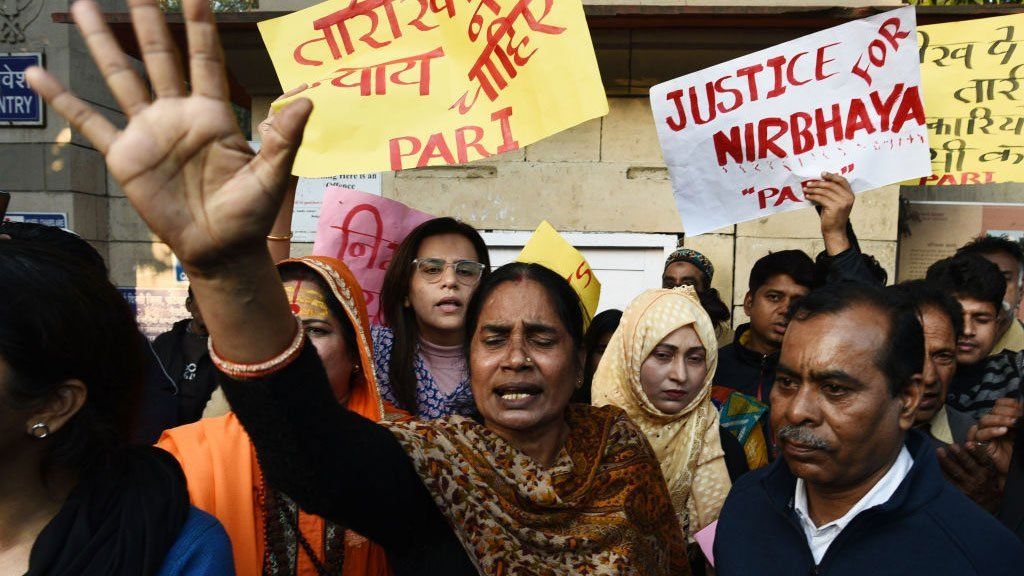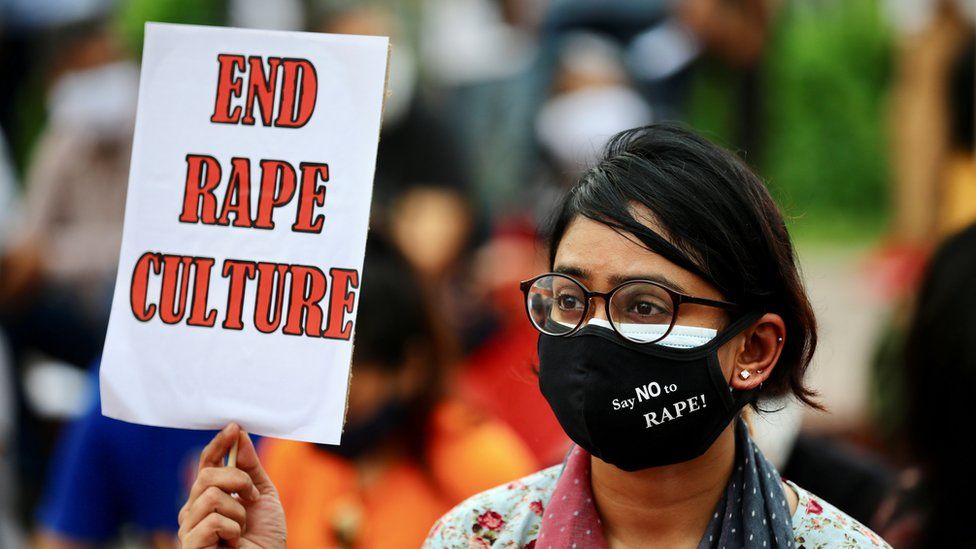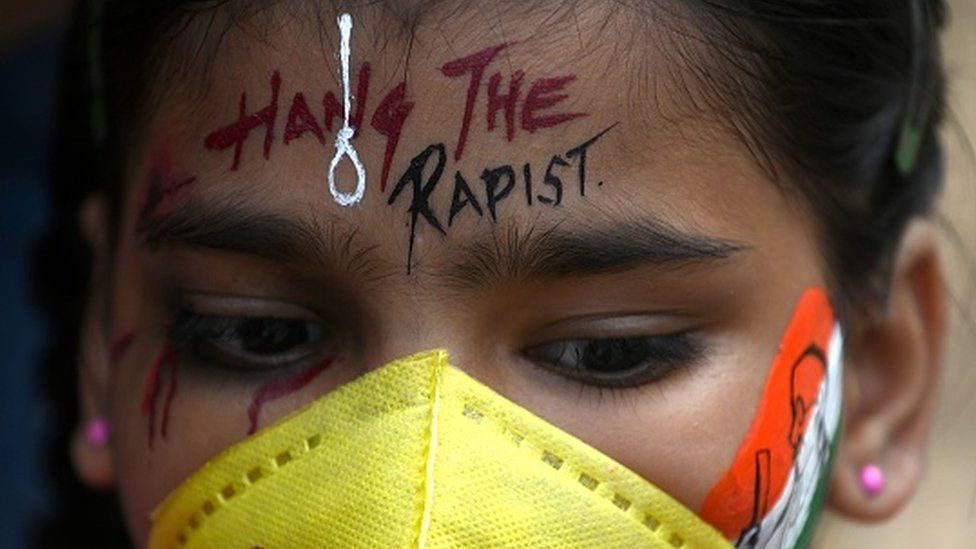Beyond The Screen: Navigating Rape Scenes In Movies
The portrayal of sexual violence in cinema has long been a contentious and deeply complex subject, sparking intense debate among filmmakers, critics, and audiences alike. From classic masterpieces to modern blockbusters, the inclusion of rape scenes in movies raises profound questions about artistic intent, narrative necessity, and the profound impact on viewers. This article delves into the multifaceted discussions surrounding these sensitive depictions, exploring their historical context, ethical implications, and the crucial need for responsible storytelling in an era where media consumption is more prevalent than ever.
For many, encountering a scene of sexual assault on screen can be profoundly disturbing, triggering real-world trauma and causing immense discomfort. Yet, some argue that when handled with care and purpose, such scenes can serve as powerful narrative tools, shedding light on the harsh realities of violence and its devastating consequences. This exploration aims to dissect these varying perspectives, offering insights into why these scenes are included, how they affect audiences, and the ongoing push for more thoughtful and ethical representations within the film industry.
Table of Contents
- The Complex Landscape of Rape Scenes in Movies
- Differentiating Art from Exploitation
- Why Filmmakers Include Rape Scenes: Intent vs. Impact
- The "Powerful" Narrative: When Does It Work?
- The Troubling Tropes and Normalization of Sexual Violence
- The Rise and Fall of Rape-Revenge Films
- Deconstructing the Three-Act Structure
- The Viewer's Experience: Trauma, Triggers, and Avoidance
- Curating Your Watchlist: Movies Without Sexual Violence
- Ethical Considerations and Filmmaker Responsibility
- Moving Forward: Towards More Thoughtful Depictions
The Complex Landscape of Rape Scenes in Movies
The depiction of sexual violence in cinema is far from monolithic; it encompasses a vast spectrum of approaches, from the subtly implied to the explicitly graphic. For decades, filmmakers have grappled with the challenge of portraying such a sensitive subject in a way that serves the narrative without becoming gratuitous or exploitative. The "Data Kalimat" provided highlights this range, noting that some inclusions are "sort of all over the board." This variety makes it challenging to draw a single, overarching conclusion about the appropriateness of rape scenes in movies. Historically, sexual assault has been used as a plot device to shock audiences, establish a character's villainy, or provide motivation for a protagonist's journey. From classic Hollywood to contemporary independent cinema, these scenes have appeared in various genres, including drama, horror, and even action films. The discussion around them often centers on whether their inclusion adds genuine artistic value or merely exploits trauma for entertainment. The prevalence of sexual assault in media, as suggested by the provided data, can easily be dismissed unless the scope of the problem is visualized. This underscores the need for a nuanced discussion that acknowledges both the artistic aspirations and the potential for harm.Differentiating Art from Exploitation
One of the most critical distinctions to make when discussing rape scenes in movies is the line between artistic intent and pure exploitation. The "Data Kalimat" contains deeply disturbing phrases like "We feature the best rape videos you'll ever see on the internet, Watch rape sex scenes and videos in hd, Better than porn and free to watch!" and "Popular in forced sex scene from mainstream movies drunk girl easy forced fucked by classmate guy police officers women was raped." These phrases represent the darkest, most predatory corners of content creation, which unequivocally cross the line into glorifying and trivializing sexual violence. Such content is not art; it is harmful, illegal, and contributes to a culture that normalizes abuse. In contrast, legitimate cinematic discussions focus on films where the depiction, while disturbing, aims to convey a message, evoke empathy, or comment on societal issues. As one perspective from the data notes, "I'm not a sicko, i think when a filmmaker can handle rape really well it's powerful." This sentiment points to the potential for responsible storytelling, where the act itself is not sensationalized but rather its devastating impact is explored. The challenge lies in discerning when a scene truly serves a profound narrative purpose versus when it is merely designed to shock or titillate, often at the expense of the victim's dignity and the audience's well-being.Why Filmmakers Include Rape Scenes: Intent vs. Impact
Filmmakers often justify the inclusion of rape scenes in movies by citing various artistic or narrative intentions. These can range from depicting the brutal realities of war or crime, illustrating a character's loss of innocence, or providing a catalyst for a revenge plot. For instance, a film might use such a scene to establish the depths of human cruelty, as seen in historical dramas or crime thrillers. The goal is often to evoke a strong emotional response, forcing the audience to confront uncomfortable truths about violence and vulnerability. However, the intent behind a scene does not always align with its actual impact on the audience. A filmmaker might intend to portray the horror of sexual assault, but if the scene is too graphic, prolonged, or lacks a clear narrative purpose beyond shock, it can inadvertently traumatize viewers, re-victimize survivors, or even be misinterpreted as sensationalism. The debate often centers on whether the scene truly adds necessary depth or if the same narrative point could have been conveyed with less explicit or triggering content. This tension between artistic freedom and ethical responsibility is a constant challenge for creators.The "Powerful" Narrative: When Does It Work?
When does a rape scene in a movie truly achieve a "powerful" effect, as suggested by the "Data Kalimat"? It often happens when the focus shifts away from the act itself and towards its profound, lasting consequences on the victim and their environment. A powerful depiction typically avoids lingering on the violence, instead emphasizing the emotional and psychological aftermath. This can be achieved through:- Focus on the Victim's Perspective: Instead of glorifying the perpetrator or the act, the camera and narrative focus on the victim's fear, pain, and subsequent struggle for survival or justice. The "Data Kalimat" mentions a scene where "the red lights than envelop the scene, along with the claustrophobically narrow walls that echo the victims screams make it potentially the most harrowing and powerful depiction of rape ever filmed." This suggests that atmospheric elements and the victim's experience, rather than explicit visuals, can create profound impact.
- Narrative Necessity: The scene must be integral to the plot and character development, not merely a shock tactic. It should propel the story forward in a way that no other event could, leading to significant character transformation or thematic exploration.
- Subtlety and Implication: Often, less is more. Implied violence, rather than explicit depiction, can be far more disturbing and effective, allowing the audience's imagination to fill in the horror without forcing them to witness graphic details. This respects the audience's boundaries while still conveying the severity of the event.
- Consequences and Aftermath: A powerful scene delves into the long-term repercussions of the assault, such as the victim's journey towards healing, seeking justice, or reclaiming agency. This transforms the scene from a moment of violence into a catalyst for a deeper human story.
The Troubling Tropes and Normalization of Sexual Violence
Despite the potential for thoughtful storytelling, the history of cinema is replete with problematic depictions of sexual violence that reinforce harmful stereotypes and contribute to the normalization of assault. The "Data Kalimat" touches upon this with phrases like "Popular in forced sex scene from mainstream movies drunk girl easy forced fucked by classmate guy police officers women was raped," which points to common, deeply disturbing tropes. These often involve:- The "Drunk Girl" Trope: This harmful trope implies that intoxication diminishes a person's capacity to consent, thus shifting blame from the perpetrator to the victim. It often trivializes sexual assault by framing it as an inevitable outcome of a party environment.
- Rape as a Character Development Tool for Men: Far too often, female characters are subjected to sexual violence not for their own narrative arc, but to provide motivation or character development for a male protagonist (e.g., inspiring him to seek revenge). This reduces the victim to a mere plot device, dehumanizing her experience.
- The "Easy" Victim: Some portrayals suggest certain individuals are "easy" targets, implying they are somehow responsible for the assault due to their behavior, attire, or perceived vulnerability. This victim-blaming narrative is dangerous and inaccurate.
- Sexual Violence as a Display of Power: While sexual assault is indeed about power, some films depict it in a way that sensationalizes the perpetrator's dominance rather than focusing on the victim's disempowerment and trauma. This can inadvertently glorify the act.
- Lack of Consequences for Perpetrators: In many narratives, perpetrators face minimal or no repercussions for their actions, sending a message that sexual violence is not taken seriously or that justice is unattainable.
The Rise and Fall of Rape-Revenge Films
The "Data Kalimat" specifically mentions "Rape and revenge films (rape/revenge) are a subgenre of exploitation film that was particularly popular in the 1970s." This subgenre emerged as a controversial but significant part of cinematic history, characterized by its distinct narrative structure and often graphic content. Films like *I Spit on Your Grave* (1978) are quintessential examples, defining the genre's often brutal and cathartic appeal. While often criticized for their exploitation of sexual violence, proponents argue that rape-revenge films, at their best, can be seen as a raw, albeit problematic, form of feminist protest. They offer a fantasy of empowerment and justice in a world where real-life perpetrators often go unpunished. However, their explicit nature and the initial focus on the assault itself often overshadow any potential message of empowerment, making them deeply divisive. The "Data Kalimat" also mentions "List of movies about rape and revenge ordered by release date," indicating the genre's historical prevalence and categorization.Deconstructing the Three-Act Structure
The "Data Kalimat" provides a clear outline of the typical three-act structure of rape-revenge movies:- A woman is raped/gang raped, tortured, and left for dead: This initial act is the inciting incident, designed to establish the profound injustice and trauma suffered by the protagonist. It often involves highly graphic and disturbing rape scenes in movies, which are the primary source of controversy for the genre. The explicitness here is often intended to fuel the audience's desire for retribution.
- The woman survives and rehabilitates herself: This act focuses on the victim's struggle to recover, both physically and psychologically. It's a period of transformation, where the character regains strength and resolves to seek justice. This part of the narrative is crucial for building empathy and justifying the subsequent actions.
- The woman takes revenge and kills all of her rapists: The final act is the cathartic climax, where the survivor hunts down and brutally punishes her attackers. This is where the "revenge" aspect comes to the forefront, often depicted with extreme violence that mirrors the initial assault. The satisfaction for the audience comes from seeing justice, albeit vigilante justice, served.
The Viewer's Experience: Trauma, Triggers, and Avoidance
Perhaps the most crucial aspect of discussing rape scenes in movies is their profound impact on the audience, particularly survivors of sexual assault. The "Data Kalimat" powerfully articulates this: "I am not able to see any sexual violence in a movie, It makes me physically sick, so i wanted to create a list of movies which depicts rape and other kind of sexual violence, so people with similar problem may avoid these." This sentiment highlights a critical user need: the desire to avoid potentially triggering content. For many, these scenes are not merely fictional plot points but can serve as powerful triggers, leading to re-traumatization, anxiety, panic attacks, and a host of other distressing psychological and physical reactions. The casual inclusion of sexual violence, or its depiction without adequate warning, can make media consumption a minefield for survivors. The "Data Kalimat" also mentions specific instances where "fans think went too far — in particular, the scenes at the end of season 1 were called the most graphic and disturbing rape scenes ever," demonstrating how even within a fictional context, such depictions can deeply disturb and alienate viewers.Curating Your Watchlist: Movies Without Sexual Violence
Given the very real and debilitating impact of triggering content, the ability to curate one's watchlist to avoid rape scenes in movies and other forms of sexual violence is incredibly important. While resources like "Discover new movies and tv shows tagged with 'rape' and where you can watch them" or "List of movies about rape and sexual harassment ordered by release date" exist, these are often for those *seeking* such content for academic or critical purposes, or for those who want to know what to *avoid*. For individuals who wish to steer clear of these depictions entirely, the challenge lies in the lack of consistent and standardized content warnings. While some streaming platforms and review sites are improving, a comprehensive and reliable system for flagging specific types of traumatic content is still needed. Initiatives driven by viewers themselves, creating lists of "no rape scenes" films, are invaluable in this regard. This empowers individuals to protect their mental and emotional well-being, ensuring that entertainment remains a source of enjoyment, not distress.Ethical Considerations and Filmmaker Responsibility
The discussion surrounding rape scenes in movies ultimately boils down to ethical responsibility. Filmmakers wield immense power in shaping narratives and influencing public perception. With this power comes a duty to consider the potential harm their work might inflict. Key ethical considerations include:- Necessity vs. Gratuitousness: Is the scene truly indispensable to the story, or could the same narrative purpose be achieved through implication, dialogue, or focusing on the aftermath? If a scene can be cut without diminishing the story's core, its inclusion might be gratuitous.
- Impact on Vulnerable Audiences: Filmmakers should be acutely aware that survivors of sexual assault are part of their audience. Creating content that is unnecessarily triggering or re-traumatizing is a significant ethical failing.
- Avoiding Sensationalism and Trivialization: Sexual assault is a horrific crime, not a sensational plot device. Depictions should avoid any element that could be perceived as titillating, exciting, or trivializing the immense suffering involved.
- Consultation and Research: When tackling such sensitive subjects, consulting with survivors, victim advocacy groups, and trauma specialists can provide invaluable insights, ensuring accuracy, sensitivity, and avoiding harmful stereotypes.
- Content Warnings: Providing clear and prominent content warnings (trigger warnings) for scenes of sexual violence is a fundamental act of respect for the audience. This allows viewers to make informed decisions about their consumption.
Moving Forward: Towards More Thoughtful Depictions
The ongoing conversation about rape scenes in movies is a testament to evolving societal sensitivities and a growing demand for more responsible media. Moving forward, the film industry needs to embrace a more thoughtful and nuanced approach to depicting sexual violence. This involves:- Prioritizing Survivor Voices: Including survivors and advocates in the creative process can ensure that depictions are authentic, respectful, and avoid re-traumatization. This moves beyond merely showing the act to truly understanding its impact.
- Innovative Storytelling: Challenging the conventional use of sexual violence as a simple plot device. Exploring alternative narrative techniques that convey the horror and impact without graphic visuals can lead to more profound and less harmful storytelling.
- Industry-Wide Standards: Advocating for clearer guidelines and best practices within the film industry regarding the portrayal of sexual violence, including standardized content warnings and rating systems that accurately reflect sensitive content.
- Education and Awareness: Fostering greater awareness among filmmakers, writers, and producers about the psychological impact of their work and the importance of ethical storytelling. This includes understanding the nuances of consent and the devastating realities of sexual assault.
- Supporting Alternative Narratives: Encouraging and funding films that explore themes of sexual violence through the lens of healing, justice, and empowerment, without relying on explicit depictions of the assault itself. The "Data Kalimat" mentions a scenario where "a prosecutor assists in bringing the perpetrators to justice," highlighting a focus on legal and societal responses rather than just the act of violence.
Conclusion
The discussion surrounding rape scenes in movies is undeniably difficult, fraught with emotional complexity and ethical dilemmas. While some argue for their artistic necessity in conveying the brutal realities of life, it is crucial to differentiate genuine artistic intent from gratuitous exploitation. The profound impact these scenes can have on viewers, particularly survivors of sexual assault, necessitates a heightened sense of responsibility from filmmakers. As audiences, we have the power to demand more thoughtful and ethical storytelling. By supporting films that handle sensitive subjects with care, advocating for clearer content warnings, and fostering open dialogue, we can collectively push the industry towards a future where powerful narratives about violence are told with empathy, respect, and a deep understanding of their real-world consequences. We encourage you to share your thoughts on this complex topic in the comments below, and to explore other articles on our site that delve into media representation and its societal impact. Your voice is vital in shaping the future of cinema.


Detail Author:
- Name : Jackeline Turner
- Username : keebler.josianne
- Email : felton54@gmail.com
- Birthdate : 1979-01-09
- Address : 22558 Wisoky Spring Hicklefurt, WI 89676-4184
- Phone : +1-425-384-0057
- Company : Hegmann Group
- Job : Customer Service Representative
- Bio : Autem voluptatum ut quisquam voluptates aut tenetur. Reiciendis ut ullam et quas provident non et sequi. Quisquam laudantium suscipit suscipit non voluptatem distinctio.
Socials
twitter:
- url : https://twitter.com/mcorwin
- username : mcorwin
- bio : Nesciunt cumque consequatur molestiae. Alias minus qui provident amet aut fugit sed praesentium. Tempora iste voluptatem minus ad dolor et. Quo neque ab qui.
- followers : 2089
- following : 2815
tiktok:
- url : https://tiktok.com/@mcorwin
- username : mcorwin
- bio : Est illum id voluptates reiciendis. Non eius nisi qui.
- followers : 3024
- following : 885